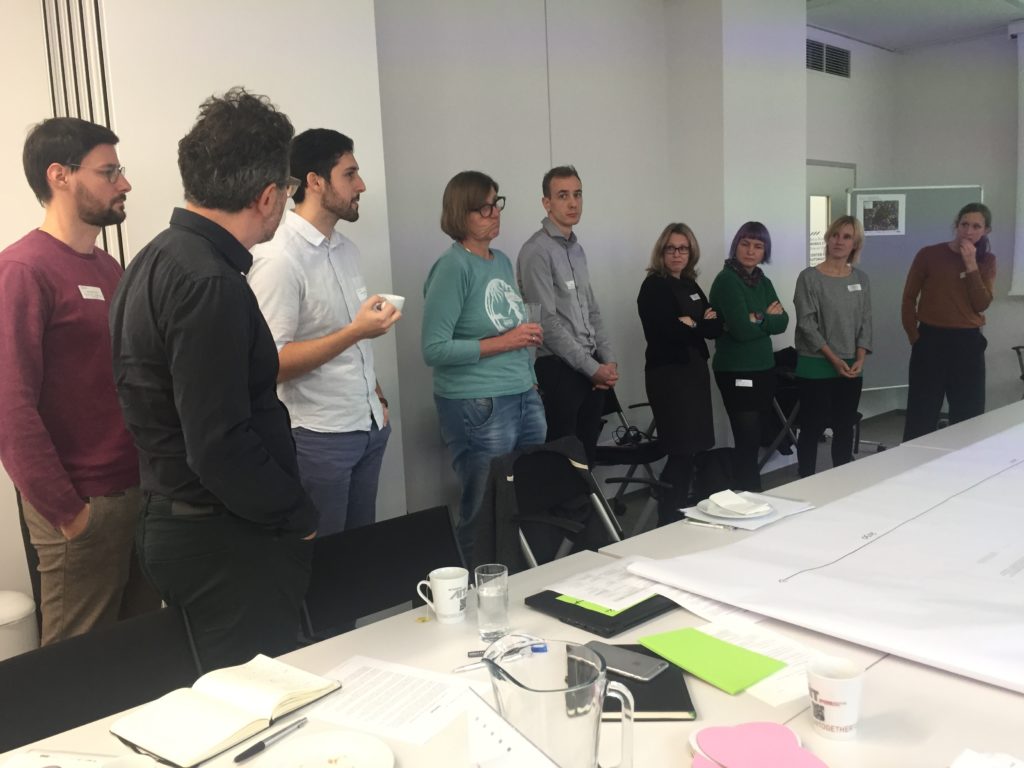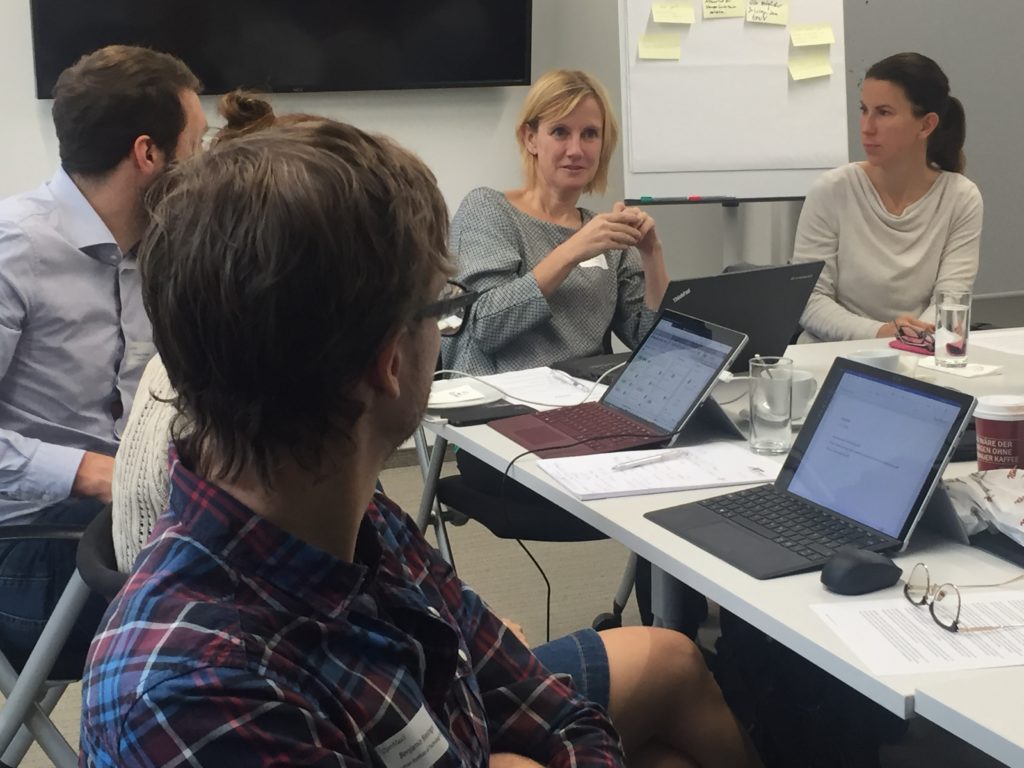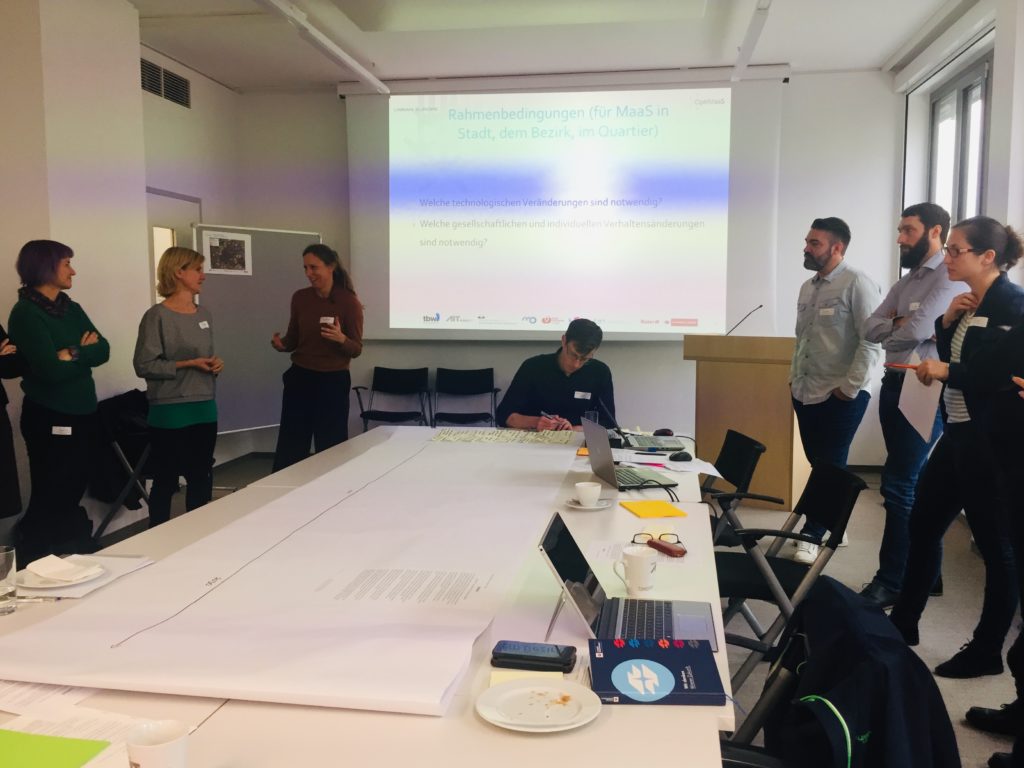“In the distant future in a remote galaxy . . .
… in the capital of the eternal and glorious empire, FutureWien City, the long battle for the mobility turnaround has been won. The public space is again evenly distributed and filled with life. Instead of the daily car avalanches, children are once again rolling on scooters through the streets of the city. Pedestrians, cyclists and other environmentally friendly means of transport have enough space to move around safely and efficiently. The few private cars that can still be seen in Danubikon are parked in collective garages so that the public space can be used for more important things.“
But how to reach this vision and how can MaaS support it?
On November 19th, 2019 nineteen experts of city departments, competence centres for urban development, research institutions, transport authorities and district management institutions met for “moving step-wise back in time from [the Vienna vision for 2030] future scenario to the present in order to identify the decisions and actions that must be taken at critical points if the scenario is to be achieved” (WHO glossary in Miola, 2018 )1.
The method of back-casting can be understood as an alternative to traditional forecast (Robinson 1990)2. It is a method in which the future desired conditions are envisioned and steps are defined to attain those conditions. The idea is not to take steps that are merely a continuum of present methods extrapolated into the future.
Starting from the vision for 2030 presented by Thomas Vith (UIV) and a strategic problem oriented presentation of the status quo in mobility and planning in development areas at the urban fringe by Gerald Franz (UIV) the invited experts started to discuss the necessary activities in the field of MaaS and mobility development to realise the vision. During the process which was facilitated by staff of tbw research GesmbH and Urban Innovation Vienna GmbH a practical portfolio of lifestyle-oriented policies, market-oriented policies, regulation oriented policies and public infrastructure/services related actions and respective decision needs were discussed, prioritised and grouped in a temporal series. Finally, the group elaborated how the necessary changes have to be realised and what stakeholder (groups) need to be involved.
It became visible that the vision for 2030 can only be achieved if action is taken immediately and consistently and push and pull measures go hand in hand.



sd
1 Miola, A., 2008. Backcasting Approach for Sustainable Mobility. JRC Scientific and Technical Reports. European Commission, Joint Reseqarch Centre – Institute for Environment and Sustainability.-Ispra. Accessed on: December 13th, 2019. [Online]. Available: https://pursuit.unimelb.edu.au/articles/finding-the-building-blocks-of-wood?utm_source=linkedin.com&utm_medium=social&utm_content=story .
2 Robinson, J., 1990, Futures under glass: a recipe for people who hate to predict. “Futures”, October, pp.820-842.